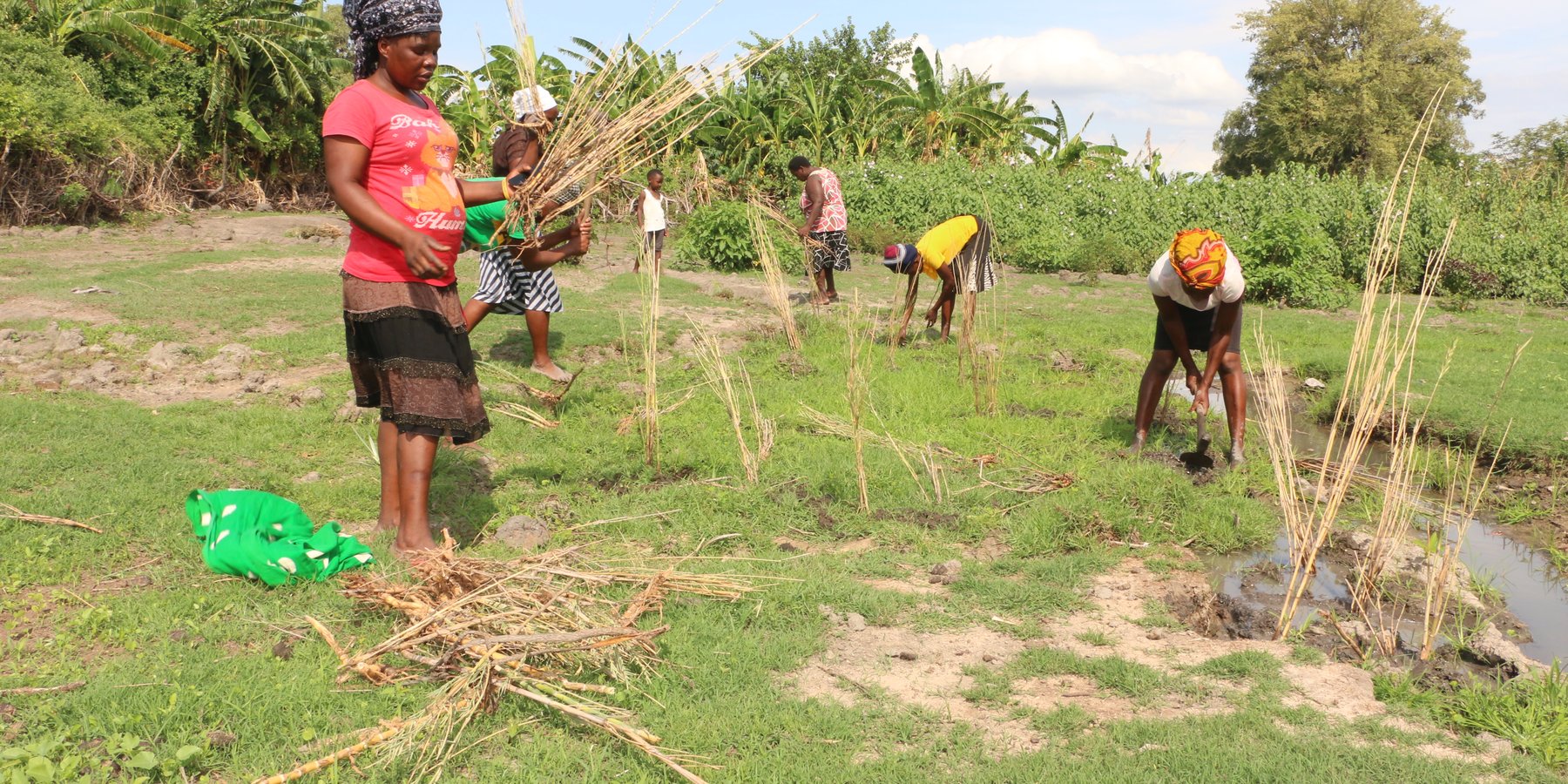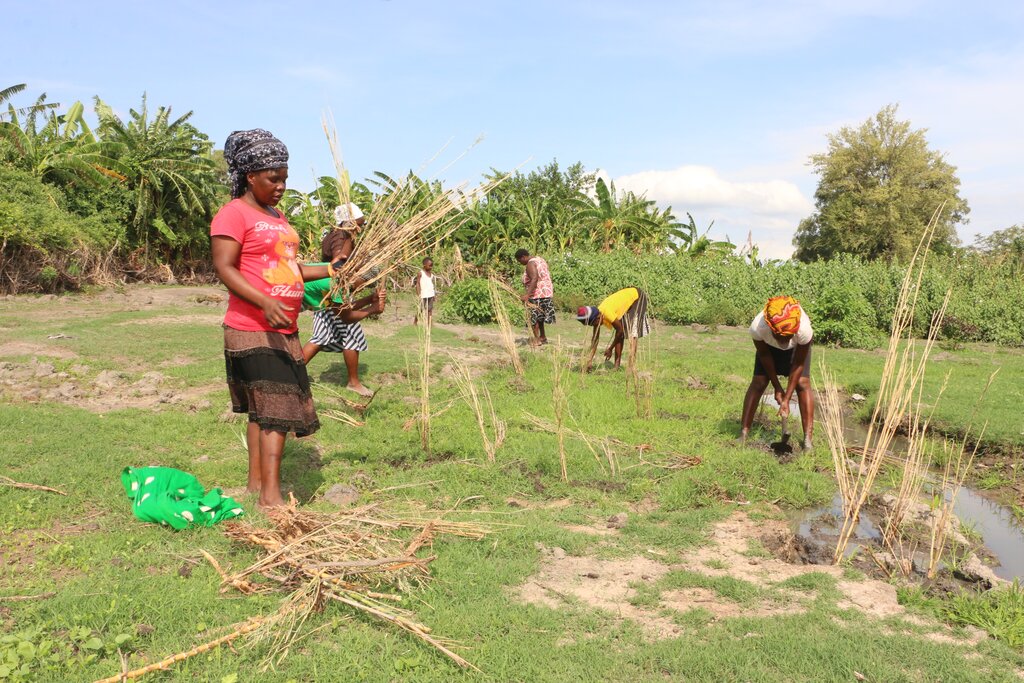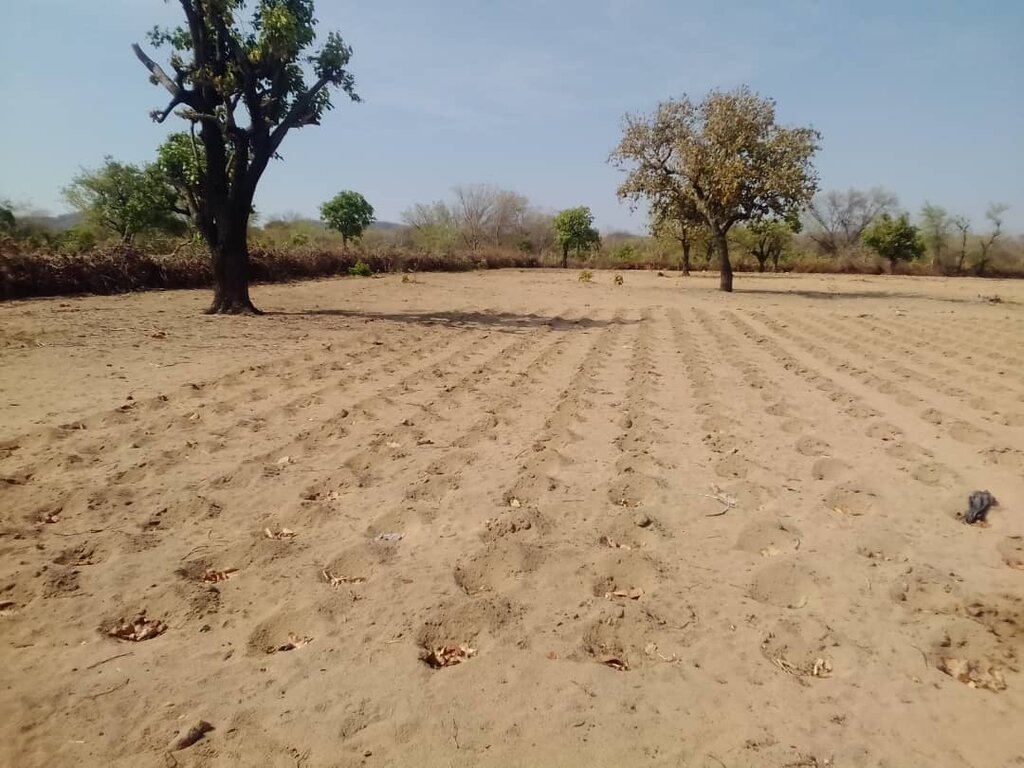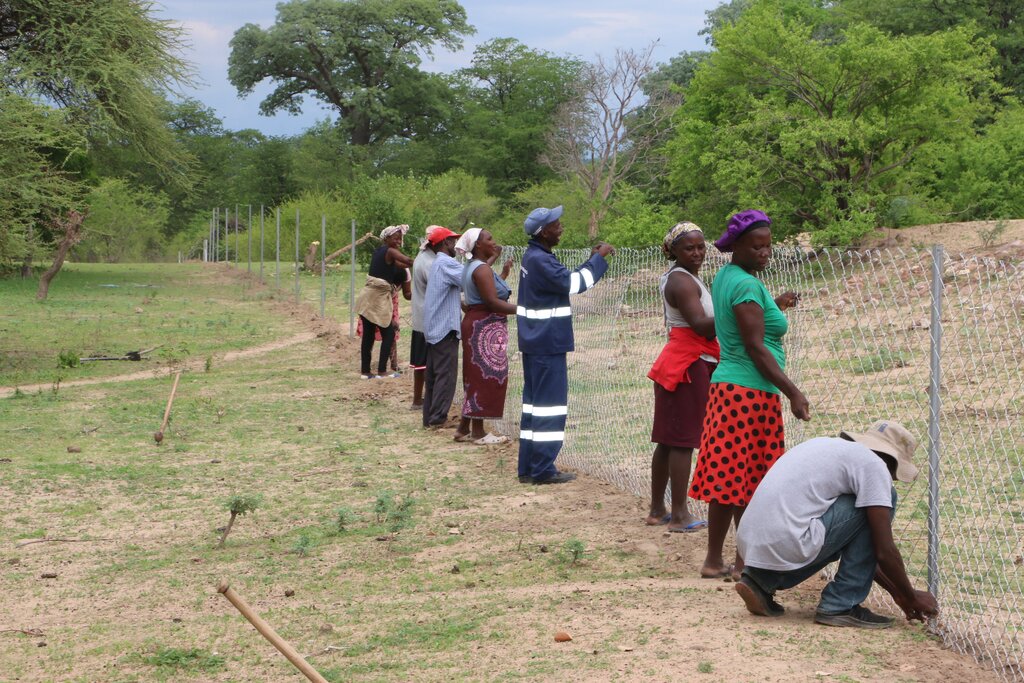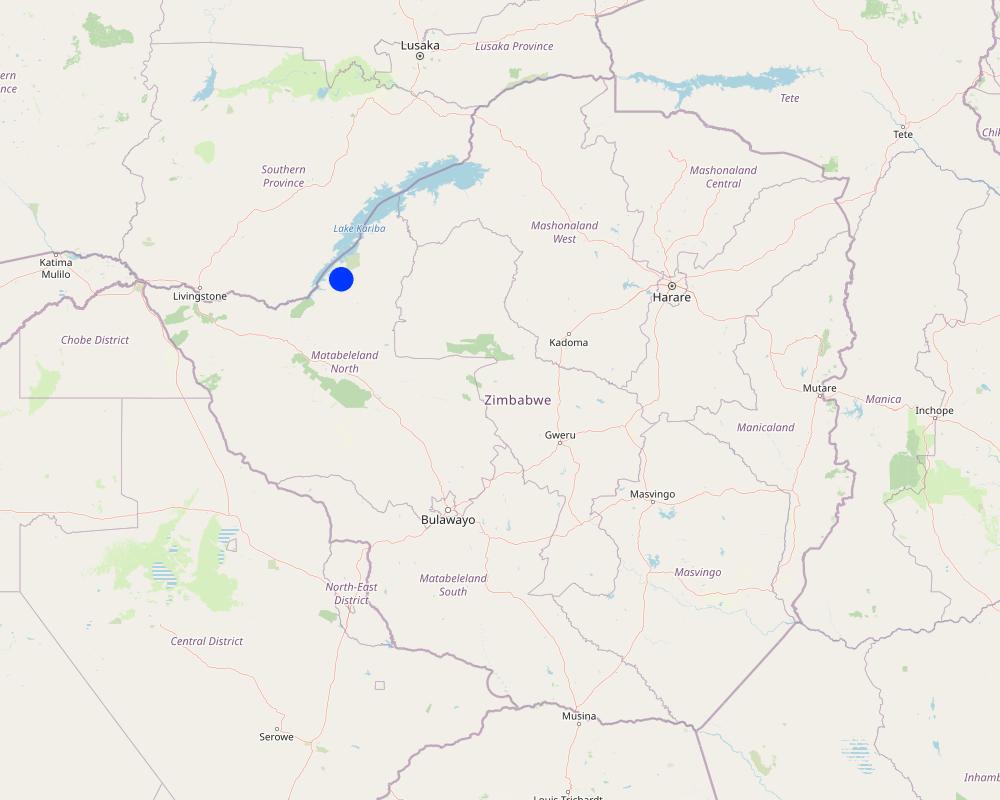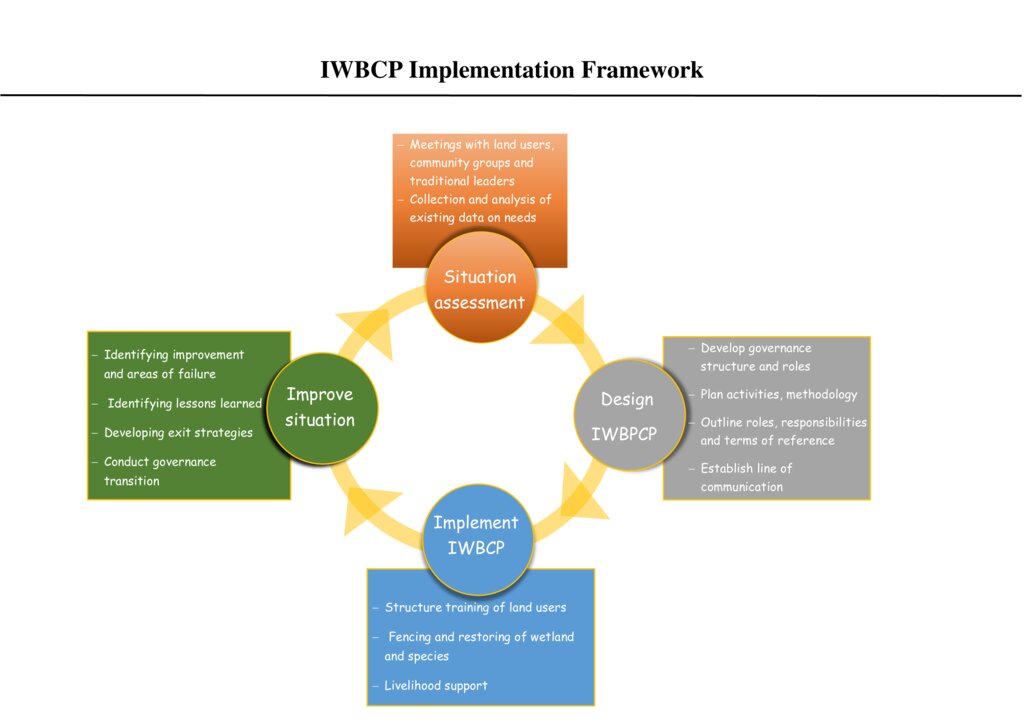Integrated Wetlands Biodiversity Conservation Project [ຊິມແບບວີ]
- ການສ້າງ:
- ປັບປູງ:
- ຜູ້ສັງລວມຂໍ້ມູນ: Kalulu Mumpande
- ບັນນາທິການ: –
- ຜູ້ທົບທວນຄືນ: William Critchley, Joana Eichenberger
IWBCP
approaches_7367 - ຊິມແບບວີ
ເບິ່ງພາກສ່ວນ
ຂະຫຍາຍທັງໝົດ ຍຸບທັງໝົດ1. ຂໍ້ມູນທົ່ວໄປ
1.2 ລາຍລະອຽດ ການຕິດຕໍ່ ຂອງບຸກຄົນທີ່ຊັບພະຍາກອນ ແລະ ສະຖາບັນ ການມີສ່ວນຮ່ວມ ໃນການປະເມີນຜົນ ແລະ ເອກະສານ ຂອງວິທີທາງ
ບຸກຄົນສຳຄັນ (ຫຼາຍຄົນ)
co-compiler:
Mumpande Kalulu
+263773667529 / +263773667529
mumpandekalulu@yahoo.com / safesewa@gmail.com
Safe Environment & Wildlife Africa
Stand No. 1659 Medium Density Binga
ຊິມແບບວີ
ຜູ້ຊ່ຽວຊານ ດ້ານການຄຸ້ມຄອງ ທີ່ດິນແບບຍືນຍົງ:
Mumkombwe Jane
+263 773666246 / +263 773666246
katemunkombwe46@gmail.com / katemunkombwe46@gmail.com
Agriculture & Rural Development Advisory Services (ARDAS)
Binga medium Density Stand no// 872 Binga
ຊິມແບບວີ
ຜູ້ນໍາໃຊ້ທີ່ດິນ:
Susan Mwembe
+263782644815 / +263782644815
Nil / Nil
Smallholder Farmer
Manjolo Primary School P.O Box 10 Binga
ຊິມແບບວີ
ຜູ້ນໍາໃຊ້ທີ່ດິນ:
Mudenda Naison
+263771152184 / +263771152184
Nil / Nil
Smallholder Farmer
Manjolo Primary School P.O Box 10 Binga
ຊິມແບບວີ
Indigenous Knowledge Guardian:
Mwembe Nomai
+263775256810 (Daughter) / +263775256810 (Daughter)
Nil / Nil
Community Elderly
Manjolo Primary School P.O Box 10 Binga
ຊິມແບບວີ
ຊື່ຂອງ ສະຖາບັນການຈັດຕັ້ງ ທີ່ອໍານວຍຄວາມສະດວກ ໃນການສ້າງເອກກະສານ ຫຼື ປະເມີນແນວທາງ (ຖ້າກ່ຽວຂ້ອງ)
Safe Environment & Wildlife Africa (SEWA)1.3 ເງື່ອນໄຂ ຂອງການນໍາໃຊ້ເອກກະສານຂໍ້ມູນ ຂອງ WOCAT
ເມື່ອໃດທີ່ໄດ້ສັງລວມຂໍ້ມູນ (ຢູ່ພາກສະໜາມ)?
21/10/2024
ຜູ້ສັງລວມ ແລະ ບັນດາຜູ້ຕອບແບບສອບຖາມ ຍອມຮັບໃນເງື່ອນໄຂ ການນໍາໃຊ້ຂໍ້ມູນເອກະສານ ທີ່ສ້າງຂື້ນ ໂດຍຜ່ານ ອົງການ WOCAT:
ແມ່ນ
2. ພັນລະນາ ແນວທາງການຄຸ້ມຄອງນໍາໃຊ້ດິນແບບຍືນຍົງ
2.1 ການອະທິບາຍ ໂດຍຫຍໍ້ ຂອງວິທີທາງ
The integrated wetlands biodiversity conservation project aims to restore wetlands and associated biodiversity. The approach strengthens the resilience of neighbouring marginalized groups to climate change through developing lifelong skills and providing livelihoods support.
2.2 ການອະທິບາຍ ລາຍລະອຽດ ຂອງວິທີທາງ
ການອະທິບາຍ ລາຍລະອຽດ ຂອງວິທີທາງ:
The Integrated Wetlands Biodiversity Conservation Project aims to restore wetlands and associated biodiversity. It is a 2-year project which started in June 2023 with the support of a USD 50,000.00 grant from the Global Environment Facility Small Grants Programme, implemented by the United Nations Development Programme (UNDP-GEFSGP). The approach strengthens the resilience of neighbouring community to climate change through developing lifelong skills and providing livelihood support. It targets those marginalized groups surrounding protected areas, who experience severe droughts due to high cases of human-wildlife conflicts, making them highly food insecure. The approach is simultaneously improving sustainable management and utilization of the Masibinta wetland and its catchment.
Technical activities are targeted at restoring Masibinta wetland’s ecological integrity by protecting the wetland, implementing conservation agriculture in its catchment, reforesting bare land, controlling and reshaping gullies to create small ponds, and removing a bushy invasive species (Ipomoea carnea) while making compost from its leaves and branches. The ponds increase the recharge of the wetland. This helps provide water to the community and at the same time acts as a barrier to soil erosion and epicenters for natural vegetative cover regeneration and biodiversity restoration. Land degradation neutrality is an overall goal.
Specific targets include:
(a) Protection, rehabilitation and conservation of 13 hectares of Masibinta wetlands, as well as reclamation of degraded land in and around the wetland, while increasing the capacity of the community members to conserve biodiversity.
(b) Increasing access of 387 households to adequate and clean water.
(c) Reduction of invasive species in the wetlands by 80%, and reclamation of 1000 m of gullies.
(d) Promotion of sustainable use and management of Masibinta wetland through regenerative agriculture, livelihood support and imparting lifelong skills to 50 youths (30 females and 20 males).
A variety of technical and social methods are employed:
(a) Grey and Green Infrastructure (GGI): hybrid restoration techniques that involve the combination of engineered structures and Nature-based Solutions (NbS).
(b) Regenerative agriculture: including mulching, mixed cultivation, crop rotation, agroforestry, use of organic manure in nutrition gardens, and zero tillage (“Maganko”).
(c) Incentives: monetary incentives to the community members who offer their labour.
(d) Self-mobilization.
(e) Peer-to-peer learning.
(f) Problem-solving.
The stages of implementation involved are:
(a) Baseline survey,
(b) Education and training of project support staff, stakeholders,
(c) Monitoring, Evaluation and Learning (MEL),
(d) Livelihood support,
(e) Protection of the wetland, then MEL,
(f) Borehole Drilling,
(g) Invasive species management, then MEL,
(h) Gully modification, and
(i) Evaluation and Learning.
The stakeholders involved and their roles are:
(a) Environmental Management Agency (EMA): Implement and monitor restoration activities in the wetland and assess the impact of barricading the gully on the environment.
(b) Forestry Commission (FC): Nursery establishment, management and tree planting.
(c) Agriculture and Rural Advisory Services (ARDAS): Train farmers on agroforestry, goat rearing, climate-smart agriculture, gully reclamation, and polyculture.
(d) Rural and Infrastructure Development Agency (RIDA): oversees all engineering work.
(e) Ministry of Youth Empowerment Development and Vocational Training (MYEDVT): Monitoring youth engagement and benefits.
(f) Ministry of Women Affairs Community Small and Medium Enterprises Development (MWACSMED): Tracked and monitored inclusion and entrepreneurship.
(h) United Nations Development Programme – Grant disbursement, monitoring and evaluating the implementation and sustainability of IWBCP at the national level in line with the GEFSGP expectations.
2.3 ຮູບພາບຂອງແນວທາງ
2.4 ວີດີໂອ ຂອງວິທີທາງ
ວັນທີ:
02/02/2024
ສະຖານທີ່:
Manjolo
ຊື່ຂອງຜູ້ຖ່າຍວີດີໂອ:
Kalulu Mumpande
2.5 ປະເທດ / ເຂດ / ສະຖານທີ່ບ່ອນທີ່ແນວທາງໄດ້ຖືກນໍາໃຊ້
ປະເທດ:
ຊິມແບບວີ
ພາກພື້ນ / ລັດ / ແຂວງ:
Matebeleland North
ຂໍ້ມູນເພີ່ມເຕີມຂອງສະຖານທີ່:
Binga
ຄວາມຄິດເຫັນ:
Masibinta wetland, surrounded by bare catchment areas
Map
×2.6 ວັນທີເລີ່ມຕົ້ນ ແລະ ສິ້ນສຸດ ການຈັດຕັ້ງປະຕີບັດ ວິທີທາງ
ສະແດງປີຂອງການເລີ່ມຕົ້ນ:
2023
ຖ້າຫາກບໍ່ຮູ້ຈັກປີທີ່ແນ່ນອນ, ໃຫ້ປະມານຄາດຄະເນ ເອົາມື້ທີ່ໄດ້ເລີ່ມຈັດຕັ້ງປະຕິບັດ ວິທີທາງ:
ຕໍ່າກວ່າ 10 ປີ ຜ່ານມາ (ມາເຖິງປະຈຸບັນ)
ປີທີ່ສີ້ນສູດ (ຖ້າຢຸດບໍ່ໄດ້ນໍາໃຊ້ ວິທີທາງ):
2025
2.7 ປະເພດຂອງແນວທາງ
- ພາຍໃຕ້ໂຄງການ / ແຜນງານ
2.8 ເປົ້າໝາຍ / ຈຸດປະສົງຫຼັກ ຂອງການຈັດຕັ້ງປະຕິບັດ ວິທີທາງ
The Approach aimed at developing an environmentally responsive community, capable of managing and utilizing Masibinta Wetland most sustainably through:
(a)Increasing knowledge and skills in restoring degraded and conserving the restored land
(b)Improving perceptions on biodiversity and building best practices which promote sustainability of the natural resources capital
(c)Increasing conservation benefit sharing and improving governance of the natural resources
2.9 ເງື່ອນໄຂອໍານວຍ ຫຼື ຂັດຂວາງການປະຕິບັດຂອງເຕັກໂນໂລຢີ / ເຕັກໂນໂລຢີການນໍາໃຊ້ຕາມແນວທາງ
ການຮ່ວມມື / ການປະສານງານຂອງຜູ້ກ່ຽວຂ້ອງ
- ອໍານວຍ
Collaboration between the stakeholder and the community enabled the Approach to win a Provincial Award: Excellence in Biodiversity Restoration and Social Impact.
ກ່ຽວກັບກົດໝາຍ (ສິດນໍາໃຊ້ດິນ, ສິດນໍາໃຊ້ນໍ້າ)
- ເຊື່ອງຊ້ອນ
Land is owned along family lines which make it difficult to restore. For example a 100-meters portion of a gully which was reclaimed was later cleared to paved a way for a garden by the family member.
ນະໂຍບາຍ
- ເຊື່ອງຊ້ອນ
Lack of policy on conservation cultivation
ຄວາມຮູ້ກ່ຽວກັບການຄຸ້ມຄອງ ທີ່ດິນແບບຍືນຍົງ, ການເຂົ້າເຖິງການສະໜັບສະໜູນ ທາງດ້ານວິຊາການ
- ເຊື່ອງຊ້ອນ
The stakeholders have limited knowledge on disaster risk reduction and regenerative farming
ຕະຫຼາດ (ໃນການຊື້ວັດຖຸດິບ, ຂາຍຜະລິດຕະພັນ) ແລະ ລາຄາ
- ເຊື່ອງຊ້ອນ
Limited access to markets which offers competitive prices for the landers as producers.
ວຽກ, ມີກໍາລັງຄົນ
- ເຊື່ອງຊ້ອນ
The work load is huge and the manpower is limited. The support staff were on a voluntary contract.
3. ການມີສ່ວນຮ່ວມ ແລະ ບົດບາດຂອງພາກສ່ວນທີ່ກ່ຽວຂ້ອງທີ່ໄດ້ມີສ່ວນຮ່ວມ
3.1 ຜູ້ມີສ່ວນຮ່ວມ ໃນວິທີທາງ ແລະ ພາລະບົດບາດ ຂອງເຂົາເຈົ້າ
- ຜູ້ນໍາໃຊ້ດິນໃນທ້ອງຖິ່ນ / ຊຸມຊົນທ້ອງຖິ່ນ
Traditional leaders and community members
Community members provided labour and security of materials and food during the Approach's activities. They also monitored and evaluated the Approach and provided valuable lessons. Traditional leadership provided the approach's local oversight role, whipped members into line, provided Indigenous knowledge, and guided the implementation process in accordance with the values and beliefs of the Manjolo community. Traditional leadership was key in information dissemination and resolution of issues which would otherwise affect the success of the Approach
- ຜູ້ຊ່ຽວຊານ ການນຄຸ້ມຄອງ ທີ່ດິນແບບຍືນຍົງ / ທີ່ປຶກສາດ້ານກະສິກໍາ
Agriculture & Rural Development Advisory Services (ARDAS), ZimParks, Forest Commission, Environmental Management Agency (EMA), Small to Medium Enterprises, Ministry of Youth, Social Development, Ministry of Information, Ministry of Health and Child Welfare
Provided technical support, training community members, and local management committees. Supervising activities and evaluating the Approach
- ອໍານາດ ການປົກຄອງທ້ອງຖິ່ນ
Binga District Development Committee
Monitoring and Evaluation of the Approach
Providing supportive framework and ensuring that the Approach keep in line with the district's development agenda
ຖ້າຫາກມີຫຼາຍພາກສ່ວນທີ່ເຂົ້າຮ່ວມ ໃຫ້ລະບຸ ອົງການທີ່ເປັນຫຼັກ ໃນການຈັດຕັ້ງປະຕິບັດ:
Environment Management Agency (EMA) and Agriculture & Rural Development Advisory Services (ARDAS)
3.2 ການມີສ່ວນຮ່ວມຂອງຜູ້ນໍາໃຊ້ທີ່ດິນໃນທ້ອງຖິ່ນ / ຊຸມຊົນທ້ອງຖິ່ນໃນໄລຍະທີ່ແຕກຕ່າງກັນຂອງແນວທາງ
| ການລວບລວມ ເອົາຜູ້ນໍາໃຊ້ດິນ ໃນທ້ອງຖິ່ນ / ຊຸມຊົນທ້ອງຖິ່ນ | ໃຫ້ລະບຸ ຜູ້ໃດທີ່ມີສ່ວນຮ່ວມ ໃນແຕ່ລະກິດຈະກໍາ? | |
|---|---|---|
| ການເລີ່ມຕົ້ນ / ແຮງຈູງໃຈ | ການນໍາໃໍຊ້ເອງ | Smallholder farmers The initiation began in October 2022 where the organized a meeting and invited SEWA. At this meeting the farmer highlighted the degradation of Masibinta wetland and how the degradation was negatively affecting their lives. The farmers gave suggestion on possible solutions to the challenges faced. |
| ການວາງແຜນ | ການຮ່ວມມື | Smallholder farmers, youth, traditional leaders, local business community, church leaders, teachers, Rural Care Givers, Health Workers, Resources Monitors, Counsellors, People with Disability In December 2022, the farmers who initiated the Approach mobilized community members to a planning meetings, developed activities, pledged own contribution to the Approach, outlined roles of each social group in the Approach, developed ways of mobilizing locally available materials and selected management committees and local lines of communication. They also identified potential challenges and suggested ways of dealing with the challenges that could otherwise arise from the Approach |
| ການປະຕິບັດ | ການຮ່ວມມື | The smallholder farmers, traditional leaders, local business community, youth, church leaders, teachers, Rural Care Givers, Health Workers, Resources Monitors, Counsellors, People with Disability The implementation started in July 2023 after GEFSGP had supported the Approach with a grant of $50,000.00 through the UNDP. The community members worked together and provided labour and security of materials and food during the Approach's activities. They also monitored and evaluated the Approach and provided valuable lessons. Traditional leadership provided the approach's local oversight role, whipped members into line, provided Indigenous knowledge, and guided the implementation process in accordance with the values and beliefs of the Manjolo community. Traditional leadership was key in information dissemination and resolution of issues which would otherwise affect the success of the Approach |
| ຕິດຕາມກວດກາ / ການປະເມີນຜົນ | ການຮ່ວມມື | Small holder farmers, youth, traditional leaders, local business community, church leaders, teachers, Rural Care Givers, Health Workers, Resources Monitors, Counsellors, and People with Disability, These provided the views on how the Approach impacted their lives and also on what needed to be changed. |
3.3 ແຜນວາດ (ຖ້າມີ)
ການອະທິບາຍ:
Integrated Wetland Biodiversity Conservation Project (IWBCP) Implementation framework
ຜູ້ຂຽນ:
Mumpande Kalulu
3.4 ການຕັດສິນໃຈກ່ຽວກັບການຄັດເລືອກເຕັກໂນໂລຢີຂອງການຄຸ້ມຄອງທີ່ດິນແບບຍືນຍົງ / ເຕັກໂນໂລຢີ
ລະບຸ ຄົນທີ່ຕັດສິນໃຈ ກ່ຽວກັບການຄັດເລືອກຂອງ ເຕັກໂນໂລຢີ / ເຕັກໂນໂລຢີ ຈະໄດ້ຮັບການປະຕິບັດ:
- ພາກສ່ວນກ່ຽວຂ້ອງທັງໝົດ, ເປັນສ່ວນໜຶ່ງ ຂອງວິທີທາງແບບມີສ່ວນຮ່ວມ
Specify on what basis decisions were made:
- ປະສົບການສ່ວນບຸກຄົນ ແລະ ຄວາມຄິດເຫັນ (ທີ່ບໍ່ເປັນເອກກະສານ)
4. ການສະໜັບສະໜູນທາງດ້ານວິຊາການ, ການສ້າງຄວາມສາມາດ, ແລະ ການຈັດການຄວາມຮູ້.
4.1 ການສ້າງຄວາມສາມາດ / ການຝຶກອົບຮົມ
ຜູ້ນໍາໃຊ້ທີ່ດິນ ຫຼື ພາກສ່ວນກ່ຽວຂ້ອງອື່ນໆ ໄດ້ຮັບການຝຶກອົບຮົມບໍ່?
ແມ່ນ
ຖ້າເປັນໄປໄດ້, ໃຫ້ລະບຸເພດ, ອາຍຸ, ສະຖານະພາບ, ຊົນເຜົ່າ, ແລະ ອື່ນໆ:
124 smallholder farmers (69 females, 55 males), 10 Village Heads (2 females, 11males), and 2 Ward-based Environment Monitors (all males) were capacity developed from the 32 hours structured training on land and biodiversity restoration and conservation. During the training the participants were engaged through presentations, drama, role plays, scenarios, problem-solving and field trips. The key stakeholders drawn from government line ministries, and Binga Rural District Council trained the the beneficiaries.
ຮູບແບບຂອງການຝຶກອົບຮົມ:
- ການເຮັດຕົວຈິງ
- ຕົວຕໍ່ຕົວ
- ກອງປະຊຸມ
ໃນຫົວຂໍ້:
Biodiversity conservation, project infrastructure management, sustainable land management, agroforestry, gully reclamation, conservation farming, climate change, and environmental policies
ຄວາມຄິດເຫັນ:
The training sessions were not enough due to limited budget. Each training was conducted conducted over for 8hrs and the participants had little time for hands-on participation.
4.2 ການບໍລິການໃຫ້ຄໍາປຶກສາ
ເຮັດຜູ້ໃຊ້ທີ່ດິນມີການເຂົ້າເຖິງການບໍລິການໃຫ້ຄໍາປຶກສາ?
ແມ່ນ
ລະບຸວ່າການສະໜອງ ການບໍລິການ ໃຫ້ຄໍາປຶກສາ:
- ໃນພື້ນທີ່ຂອງຜູ້ນໍາໃຊ້ດິນ
- ສູນຄົ້ນຄວ້າ
ອະທິບາຍ / ຄວາມຄິດເຫັນ:
The Rural & Infrastrure Development Agency , Forest Commission and Agriculture & Rural Development Advisory Services provided advisory services to land users crop fields preparation, gully reclamation, tree planting, and wetland management
4.3 ສະຖາບັນການສ້າງຄວາມເຂັ້ມແຂງ (ການພັດທະນາອົງການຈັດຕັ້ງ)
ສະຖາບັນ ໄດ້ຮັບການສ້າງຕັ້ງຂື້ນ ຫຼື ໄດ້ຮັບການສ້າງຄວາມເຂັ້ມແຂງ ໂດຍການຈັດຕັ້ງປະຕິບັດ ວິທີທາງບໍ່?
- ມີ, ພໍສົມຄວນ
ລະບຸ ທາງສະຖາບັນ ໄດ້ສ້າງຄວາມເຂັ້ມແຂງ ໃນລະດັບໃດ (ຫຼາຍ):
- ທ້ອງຖິ່ນ
ອະທິບາຍ ສະຖາບັນການຈັດຕັ້ງ, ພາລະບົດບາດ ແລະ ໜ້າທີ່ຮັບຜິດຊອບ, ສະມາຊິກ ແລະ ອື່ນໆ.
Community Management Committee and local constitution
Supervision of the land users and enforcing constitution
ລະບຸ ປະເພດ ຂອງສະໜັບສະໜູນ:
- ການສ້າງຄວາມອາດສາມາດ / ການຝຶກອົບຮົມ
ໃຫ້ລາຍລະອຽດເພີ່ມເຕີມ:
The management committee was trained once on their roles. However, more structured training would enhance their discharge of duties
4.4 ຕິດຕາມກວດກາ ແລະ ປະເມີນຜົນ
ການຈັດຕັ້ງປະຕິບັດ ວິທີທາງ ໄດ້ມີການປະເມີນຜົນ ແລະ ຕິດຕາມບໍ?
ແມ່ນ
ຄວາມຄິດເຫັນ:
Continuous monitoring was carried out by the Approach support staff. Monitoring and Evaluation was done quarterly, involving all key stakeholders
ຖ້າແມ່ນ, ເອກກະສານສະບັບນີ້ ແມ່ນໄດ້ນໍາໃຊ້ເຂົ້າໃນການຕິດຕາມ ແລະ ປະເມີນຜົນບໍ່?
ບໍ່ແມ່ນ
4.5 ການຄົ້ນຄວ້າ
ນີ້້ແມ່ນສ່ວນໜຶ່ງ ການຄົ້ນຄວ້າ ຂອງວິທີທາງບໍ່?
ບໍ່ແມ່ນ
5. ການສະໜັບສະໜູນທາງດ້ານການເງິນ ແລະ ອຸປະກອນຈາກພາຍນອກ
5.1 ງົບປະມານປະຈໍາປີ ສໍາລັບວິທີທາງ ຂອງການຄຸ້ມຄອງ ທີ່ດິນແບບຍືນຍົງ
ສະແດງງົບປະມານ ປະຈໍາປີ ສໍາລັບອົງປະກອບ ຂອງວິທີທາງ ການຄຸ້ມຄອງ ທີ່ດິນແບບຍືນຍົງ ເປັນໂດລາສະຫະລັດ :
25000.00
ຄໍາເຫັນ (ຕົວຢ່າງ: ແຫຼ່ງຂໍ້ມູນຫຼັກ ຂອງການສະໜອງທຶນ / ຜູ້ໃຫ້ທຶນທີ່ສໍາຄັນ):
-Co-funding
-Global Environment Facility Small Grants Programme, implemented by the United Nations Development Programme (UNDP_GEFSGP)
5.2 ການສະໜັບສະໜູນ ທາງດ້ານການເງິນ / ອຸປະກອນ ສະໜອງໃຫ້ແກ່ຜູ້ນໍາທີ່ດິນ
ຜູ້ນໍາໃຊ້ດິນ ໄດ້ຮັບການສະໜັບສະໜູນ ທາງດ້ານ ການເງິນ / ອຸປະກອນ ໃນການຈັດຕັ້ງປະຕິບັດ ເຕັກໂນໂລຢີບໍ?
ແມ່ນ
ຖ້າແມ່ນ, ໃຫ້ລະບຸປະເພດ (ຫຼາຍ) ຂອງການສະໜັບສະໜູນ, ເງື່ອນໄຂ ແລະ ຜູູ້ສະໜອງ (ຫຼາຍ):
Fencing materials, stationary, cement, goats, seed inputs
Provider: UNDP_GEFSGP
5.3 ເງິນສົມທົບສໍາລັບການນໍາໃຊ້ສະເພາະປັດໃຈຂາເຂົ້າໃນການຜະລີດກະສິກໍາ (ລວມທັງແຮງງານ)
- ອຸປະກອນ
| ໃຫ້ລະບຸໄດ້ຮັບການສະໜັບສະໜູນປັດໃຈຂາເຂົ້າຫຍັງແດ່ | ທີ່ຂອບເຂດ | ລະບຸ ການອຸດໜູນ |
|---|---|---|
| ເຄື່ອງມື | ງົບປະມານບາງສ່ວນ | |
| Fencing material | ງົບປະມານເຕັມສ່ວນ | |
- ກະສິກໍາ
| ໃຫ້ລະບຸໄດ້ຮັບການສະໜັບສະໜູນປັດໃຈຂາເຂົ້າຫຍັງແດ່ | ທີ່ຂອບເຂດ | ລະບຸ ການອຸດໜູນ |
|---|---|---|
| ແນວພັນ, ແກ່ນພັນ | ງົບປະມານບາງສ່ວນ | |
- ພື້ນຖານໂຄງລ່າງ
| ໃຫ້ລະບຸໄດ້ຮັບການສະໜັບສະໜູນປັດໃຈຂາເຂົ້າຫຍັງແດ່ | ທີ່ຂອບເຂດ | ລະບຸ ການອຸດໜູນ |
|---|---|---|
| Fence | ງົບປະມານເຕັມສ່ວນ | |
ຖ້າແຮງງານ ຂອງຜູ້ນໍາໃຊ້ດິນ ໄດ້ຮັບການສະໜັບສະໜູນ ປັດໃຈຂາເຂົ້າ, ແມ່ນບໍ່:
- ການອາສາ
ຄວາມຄິດເຫັນ:
The land user provided voluntary work during the fencing of the wetland. An additional funding of $15,000.00 for the management of the Ipomoea carnea and gully medication has been secured from he G20 Global Land Restoration Initiative. Under these activities, the land users will be provided and an incentive of $1.50 per day per individual for the provision of labour. The activities are yet to be implemented once the funds are disbursement into SEWA's bank account.
5.4 ສິນເຊື່ອ
ໄດ້ປ່ອຍສິນເຊື່ອ ສະໜອງໃຫ້ພາຍໃຕ້ ວິທີການສໍາລັບກິດຈະກໍາ ການຄຸ້ມຄອງ ທີ່ດິນແບບຍືນນຍົງບໍ່?
ບໍ່ແມ່ນ
5.5 ສິ່ງຈູງໃຈ ຫຼື ເຄື່ອງມືອື່ນໆ
ການສົ່ງເສີມ ຈັດຕັ້ງປະຕິບັດ ເຕັກໂນໂລຢີ ໃນການຄຸ້ມຄອງ ດິນແບບຍືນຍົງ ໄດ້ສະໜອງສິ່ງກະຕຸກຊຸກຍູ້ບໍ່?
ແມ່ນ
ຖ້າແມ່ນ, ໃຫ້ລະບຸ:
Monetary incentive (for activities which are yet to be done using the additional support from the G20 Global Land Restoration Initiative)
6. ວິເຄາະຜົນກະທົບ ແລະ ສັງລວມບັນຫາ
6.1 ຜົນກະທົບຂອງແນວທາງ
ວິທີທາງ ຊ່ວຍຊຸກຍູ້ ຜູ້ນຳໃຊ້ທີ່ດິນທ້ອງຖີ່ນ, ໃນການປັບປຸງ ການມີສ່ວນຮ່ວມ ຂອງຜູ້ທີ່ກ່ຽວຂ້ອງ ບໍ່?
- ບໍ່
- ມີ, ໜ້ອຍໜຶ່ງ
- ມີ, ພໍສົມຄວນ
- ມີ, ຫຼາຍ
124 land users were trained, supported with seed imputes, and goats.
ການນໍາໃຊ້ ວິທີທາງ ດັ່ງກ່າວນີ້ ສາມາດເປັນຫຼັກຖານ ທີ່ສະໜັບສະໜູນ ໃຫ້ການຕັດສິນໃຈໄດ້ບໍ່?
- ບໍ່
- ມີ, ໜ້ອຍໜຶ່ງ
- ມີ, ພໍສົມຄວນ
- ມີ, ຫຼາຍ
Decisions were made based on data gathered from community engagements, lessons learned from the before projects in the area and the surveys conducted as a baseline.
ການຈັດຕັ້ງປະຕິບັດ ວິທີທາງ ສາມາດຊ່ວຍຜູ້ນໍາໃຊ້ທີ່ດິນ ໃນການຈັດຕັ້ງປະຕິບັດ ແລະ ບໍາລຸງຮັກສາ ເຕັກໂນໂລຢີ ການຄຸ້ມຄອງ ທີ່ດິນແບບຍືນຍົງໄດ້ບໍ?
- ບໍ່
- ມີ, ໜ້ອຍໜຶ່ງ
- ມີ, ພໍສົມຄວນ
- ມີ, ຫຼາຍ
Land users have reclaimed 100 metres of gullies, implemented conservation cultivation, used nature-based approaches to restore the wetland
ການນໍາໃຊ້ ວິທີທາງ ສາມາດປັບປຸງ ການປະສານງານ ແລະ ຄ່າໃຊ້ຈ່າຍ ການຈັດຕັ້ງປະຕິບັດ ທີ່ມີປະສິດທິພາບ ຂອງການຄຸ້ມຄອງ ທີ່ດິນແບບຍືດຍົງໄດ້ບໍ່?
- ບໍ່
- ມີ, ໜ້ອຍໜຶ່ງ
- ມີ, ພໍສົມຄວນ
- ມີ, ຫຼາຍ
The use of Nature-based Solutions and indigenous knowledge reduced the cost of implementing the SLM as such approaches are cheaper in terms of cost. Approach improved coordination between the project management and land users through clearly defined roles and lines of communication
ການນໍາໃຊ້ ວິທີທາງ ສາມາດລະດົມ ຫຼື ປັບປຸງ ການເຂົ້າເຖິງຊັບພະຍາກອນ ການເງິນ ສໍາລັບການຈັດຕັ້ງປະຕິບັດ ການຄຸ້ມຄອງ ທີ່ດິນແບບຍືດຍົງໄດ້ບໍ່?
- ບໍ່
- ມີ, ໜ້ອຍໜຶ່ງ
- ມີ, ພໍສົມຄວນ
- ມີ, ຫຼາຍ
Mobilized finances from the Global Environment Facility Small Grants Programme through the United Nations Development Programme (UNDP-GEFSGP). Finances have also been mobilized from the G20 Global Land Initiative, though yet to be disbursed into SEWA's bank account.
ການນໍາໃຊ້ ວິທີທາງ ສາມາດປັບປຸງຄວາມຮູ້ ແລະ ຄວາມສາມາດຂອງຜູ້ນໍາໃຊ້ທີ່ດິນ ໃນການປະຕິບັດ ການຄຸ້ມຄອງ ທີ່ດິນແບບຍືດຍົງໄດ້ບໍ່?
- ບໍ່
- ມີ, ໜ້ອຍໜຶ່ງ
- ມີ, ພໍສົມຄວນ
- ມີ, ຫຼາຍ
124 land users were trained on SLM and were given kowledge material such as brochures.
ການນໍາໃຊ້ ວິທີທາງ ສາມາດປັບປຸງຄວາມຮູ້ ແລະ ຄວາມສາມາດ ຂອງພາກສ່ວນທີ່ກ່ຽວຂ້ອງໄດ້ບໍ່?
- ບໍ່
- ມີ, ໜ້ອຍໜຶ່ງ
- ມີ, ພໍສົມຄວນ
- ມີ, ຫຼາຍ
Not much training of stakeholders was done. However the stakeholders drew lessons from the project and shared their experience during project progress update meetings.
ການນໍາໃຊ້ ວິທີທາງ ສາມາດສ້າງຄວາມເຂັ້ມແຂງ ໃຫ້ສະຖາບັນການຈັດຕັ້ງ, ການຮ່ວມມື ລະຫວ່າງພາກສ່ວນທີ່ກ່ຽວຂ້ອງບໍ່?
- ບໍ່
- ມີ, ໜ້ອຍໜຶ່ງ
- ມີ, ພໍສົມຄວນ
- ມີ, ຫຼາຍ
Each and every stakeholder involved in the project had clearly defined roles and synergies
ການນໍາໃຊ້ ວິທີທາງ ສາມາດຫຼຸດຜ່ອນ ຂໍ້ຂັດແຍ່ງໄດ້ບໍ່?
- ບໍ່
- ມີ, ໜ້ອຍໜຶ່ງ
- ມີ, ພໍສົມຄວນ
- ມີ, ຫຼາຍ
The fencing of wetland including the nutrition gardens and the development of the land users' constitution mitigated conflicts
ການຈັດຕັ້ງປະຕິບັດ ວິທີທາງ ສາມາດສ້າງຄວາມເຂັ້ມແຂງ ທາງສັງຄົມ ແລະ ເສດຖະກິດບໍ່?
- ບໍ່
- ມີ, ໜ້ອຍໜຶ່ງ
- ມີ, ພໍສົມຄວນ
- ມີ, ຫຼາຍ
Assisted women, youth and people with disability with female goats. These groups were trained under the same rood
ການຈັດຕັ້ງປະຕິບັດ ວິທີທາງ ສາມາດຊຸກຍູ້ ຜູ້ນໍາໃຊ້ທີ່ດິນທີ່ເປັນຊາວໜຸ່ມ / ຄົນລຸ້ນໃໝ່ ໃນການຄຸ້ມຄອງ ທີ່ດິນແບບຍືນຍົງໄດ້ບໍ?
- ບໍ່
- ມີ, ໜ້ອຍໜຶ່ງ
- ມີ, ພໍສົມຄວນ
- ມີ, ຫຼາຍ
Financial limitation reduced the engagement of youth in Manjolo as the effective method of engaging youth in Manjolo require a reasonable budget
ການຈັດຕັ້ງປະຕິບັດ ວິທີທາງ ສາມາດປັບປຸງ ປະເດັນການຖືຄອງທີ່ດິນ / ສິດທິໃນການນໍາໃຊ້ທີ່ດິນ ທີ່ເຊື່ອງຊ້ອນໃນການຈັດຕັ້ງປະຕິບັດ ເຕັກໂນໂລຢີ ການຄຸ້ມຄອງ ທີ່ດິນແບບຍືນຍົງໄດ້ບໍ?
- ບໍ່
- ມີ, ໜ້ອຍໜຶ່ງ
- ມີ, ພໍສົມຄວນ
- ມີ, ຫຼາຍ
The Approach has not yet tackled the issue
ການນໍາໃຊ້ ວິທີທາງ ໄດ້ປັບປຸງ ການຄໍ້າປະກັນສະບຽງອາຫານ ຫຼື ປັບປຸງໂຄສະນາການໄດ້ບໍ່?
- ບໍ່
- ມີ, ໜ້ອຍໜຶ່ງ
- ມີ, ພໍສົມຄວນ
- ມີ, ຫຼາຍ
Through crop yields, and income generation projects.
ການຈັດຕັ້ງປະຕິບັດ ວິທີທາງ ສາມາດປັບປຸງ ການເຂົ້າເຖິງຕະຫຼາດໄດ້ບໍ?
- ບໍ່
- ມີ, ໜ້ອຍໜຶ່ງ
- ມີ, ພໍສົມຄວນ
- ມີ, ຫຼາຍ
Local market. Land users are supply Boarding School and a hospital with green vegetables
ການນໍາໃຊ້ ວິທີທາງ ໄດ້ປັບປຸງ ການເຂົ້າເຖິງນໍ້າ ແລະ ສາຂາພິບານໄດ້ບໍ່?
- ບໍ່
- ມີ, ໜ້ອຍໜຶ່ງ
- ມີ, ພໍສົມຄວນ
- ມີ, ຫຼາຍ
Boreholes Drilling couldn't find water.
ການນໍາໃຊ້ ວິທີທາງ ໄດ້ປັບປຸງ ການນໍາໃຊ້ແຫຼ່ງພະລັງງານ ແບບຍືນຍົງຫຼາຍຂື້ນບໍ່?
- ບໍ່
- ມີ, ໜ້ອຍໜຶ່ງ
- ມີ, ພໍສົມຄວນ
- ມີ, ຫຼາຍ
The Approach did not look at energy
ການຈັດຕັ້ງປະຕິບັດ ວິທີທາງ ສາມາດສ້າງຄວາມອາດສາມາດໃຫ້ຜູ້ນໍາໃຊ້ດິນ ໃນການປັບຕົວ ຕໍ່ການປ່ຽນແປງດິນຟ້າອາກາດ / ຫຼດຜ່ອນຄວາມສ່ຽງທາງໄພພິບັດໄດ້ບໍ? :
- ບໍ່
- ມີ, ໜ້ອຍໜຶ່ງ
- ມີ, ພໍສົມຄວນ
- ມີ, ຫຼາຍ
Through training and livelihoods support
2 youth were employed for fencing
6.2 ແຮງຈູງໃຈຫຼັກຂອງຜູ້ນໍາໃຊ້ທີ່ດິນໃນການປະຕິບັດການຄຸ້ມຄອງທີ່ດິນແບບຍືນຍົງ
- ການຜະລິດເພີ່ມຂຶ້ນ
Improved protection of their crops in nutrition gardens, increased crop production, ownership and management of the wetland.
- ກໍາໄລເພີ່ມຂຶ້ນ (ຄວາມສາມາດ), ການປັບປຸງຄ່າໃຊ້ຈ່າຍ, ຜົນປະໂຫຍດ, ອັດຕາສ່ວນ
81 out of 144 wetland users reported an average increase of 32% from their incomes over the last cropping season. 79 out of 144 reported an average increase of 40 kg of maize production in the last between November 2023 and March 2024. All wetland user reported reduced destruction of their crops by livestock over the past cropping season.
- ຫຼຸດຜ່ອນດິນເຊື່ອມໂຊມ
67 Farmers adopted the use of organic fertilizers and 23 were involved in the demo plots for poly cropping. The wetland user protected 13 seeps using the reeds. 15 farmers have since abandoned the use of brash wood fencing adopting the edible hedging. These practices have reduced land degradation. However restoration is still ongoing to realize full impact of the Approach.
- ຫຼຸດຜ່ອນຄວາມສ່ຽງຂອງໄພພິບັດ
89 out 144 households which used to miss at least a meal per day during the drought months (July to February) reported that they never missed a meal between July 2024 and October 2024.
- ການຫຼຸດຜ່ອນພາລະວຽກ
The fencing of wetland has significantly reduced the workload particularly for women and girls who used to spend about 27% of their 24-Hour Day manning their gardens from animals. A 12% decrease in time spend looking after crops has been observed.
- ກົດລະບຽບແລະລະບຽບການ (ລະອຽດ) / ການບັງຄັບໃຊ້
As way of improving sustainability of Masibinta wetland, the community have set rule and regulations for the management of the resources. The trespassers are liable to a commensurate fines and the rules are enforces at local level by the Community Management Committee (CMC) and the traditional leadership. The community members participate in the enforcement of the rules through being own police.
- ກຽດສັກສີ, ຄວາມກົດດັນທາງສັງຄົມ / ການຕິດຕໍ່ກັນທາງສັງຄົມ
Masibinta Wetland saves support 2400 community members and 3 schools with water, livelihoods and income for feeds and health needs. The restoration of the wetland by the Approach has unified different groups in the community by working and living together for a common cause. It has improved social relationships, pride and reduced poverty
- ລວມເຂົ້ານໍາກັນກັບການເຄື່ອນໄຫວ / ໂຄງການ / ກຸ່ມ / ເຄືອຂ່າຍ
As a result of the Approach, SEWA has joined the UNCCD and WOCAT Network.
- ຄວາມຮັບຮູ້ ທາງສີ່ງແວດລ້ອມ
The Land Users have formed the Manjolo Environment Defenders Club (MEDC). The MEDC was formed as community initiative led by women after being educated by the Approach on land restoration and Protection. The club carries out peer-to -peer education on best environmental practices, such as encouraging fellow Land Users to use organic fertilizers, stop cutting of trees, accouraging safe use of wetland and monitoring the wetland health. The club started with 4 women but now the membership has grown to 15. This shows improved environmental consciousness as a result of the Approach
- ພາສີ ແລະ ຄວາມເຊື່ອຖື, ສົມບັດສິນທໍາ
The Approach has improved the Land Users' awareness of the importance of conserving land resources. This motivated them to explore beyond what they were taught. They now value nature more that before the implementation of the approach.
- ການປັບປຸງ ຄວາມຮູ້ ແລະ ຄວາມສາມາດ ຂອງການຄຸ້ມຄອງ ທີ່ດິນແບບຍືນຍົງ
The training reconceived by the Land Users has equipped them with skills to contract gabions, plants trees, raise tree nurseries for commercial purpose. Two of the youth who were trained in fence installation got contracts on fencing. The farmers who were trained on regenerative agriculture, are now practicing on their crop fields.
- ການປັບປຸງຄວາມງົດງາມ
The Approach's innovativeness and novelty made to appeal o the Land Users
- ການຫຼຸດຜ່ອນຂໍ້ຂັດແຍ່ງ
Conflicts caused by livestock destroying crops in nutritional gardens have been reduced. However due to the improved habitat conditions, crocodiles and pythons have since invaded the wetland and new conflicts have arisen between these species and the farmers. How, SEWA is working with the Community Resources, Communal Areas Management Programmes For Indigenous Resources (CAMPFIRE) and Zimbabwe Parks & Wildlife Management Authority (ZimParks) in monitoring and relocating the crocodiles and pythons.
6.3 ຄວາມຍືນຍົງຂອງກິດຈະກໍາວິທີທາງ
ຜູ້ນໍາໃຊ້ ທີ່ດິນ ສາມາດສືບຕໍ່ ການຈັດຕັ້ງປະຕິບັດ ຜ່ານວິທີທາງໄດ້ບໍ່ (ໂດຍປາດສະຈາກ ການຊ່ວຍເຫຼືອ ຈາກພາກສ່ວນພາຍນອກ)?
- ແມ່ນ
ຖ້າ ໄດ້, ອະທິບາຍເຫດຜົນ:
In terms of human sustainability, the training that the Land Users have received, skills and knowledge that they have gained will enable them to continue with the project activities without any external support. The involvement of the Land Users in decision making structures and programmes will enable Land Users to make and implement key decisions beyond the external support. The income generating projects and the Internal Savings and Lending Schemes introduced under the Approach will ensure financial sustainability. The training of the stakeholders by the Approach provide the technical sustainability.
6.4 ຈຸດແຂງ / ຂໍ້ດີ ຂອງວິທີທາງ
| ຈຸດແຂງ / ຂໍ້ດີ / ໂອກາດໃນການນໍາໃຊ້ທີ່ດິນ |
|---|
| The Approach is providing women with financial independence and choices. |
| The Approach is empowering the marginalized community groups with climate resilient and bankable assets. For example 12 youth, 3 people with disability and 10 women have been assisted with 2 female goats, increasing conservation benefits. |
| The land Users view the Approach as their out of hunger and poverty |
| ຈຸດແຂງ / ຈຸດດີ / ໂອກາດ ຈາກທັດສະນະຂອງຜູ້ປ້ອນຂໍ້ມູນ ຫຼື ບຸກຄົນສຳຄັນ |
|---|
| Views the Approach as sustaible and transformative development. |
| The Approach is viewed as practical demonstration of sustainable land management |
| Viewed as a sources of lessons for the partners and environmentalists |
6.5 ຈຸດອ່ອນ / ຂໍ້ເສຍຂອງແນວທາງ ແລະ ວິທີການແກ້ໄຂໃຫ້ເຂົາເຈົ້າ
| ຈຸດອ່ອນ / ຂໍ້ເສຍ / ຄວາມສ່ຽງໃນມູມມອງຂອງຜູ້ນໍາໃຊ້ທີ່ດິນ | ມີວິທີການແກ້ໄຂຄືແນວໃດ? |
|---|---|
| The Approach has a limited thrust on influencing policy and land tenure | Involving policy makers at local level |
| The Approach has not identified learning areas | Identify learning areas through monitoring and evaluation sessions |
| ຈຸດອ່ອນ ຫຼື ຂໍ້ເສຍ ຫຼື ຄວາມສ່ຽງ ໃນມຸມມອງຂອງ ຜູ້ສັງລວມຂໍ້ມູນ ຫຼື ບັນດາຜູ້ຕອບແບບສອບຖາມ | ມີວິທີການແກ້ໄຂຄືແນວໃດ? |
|---|---|
| The ponds may cause risk of drowning of children as kids love playing in water | Constructing shallow ponds |
7. ເອກກະສານອ້າງອີງ ແລະ ຂໍ້ມູນການເຊື່ອມໂຍງ
7.1 ວິທີການ / ແຫຼ່ງຂໍ້ມູນ
- ການໄປຢ້ຽມຢາມພາກສະໜາມ, ການສໍາຫຼວດພາກສະໜາມ
24
- ການສໍາພາດ ຜູ້ນໍາໃຊ້ທີ່ດິນ
6
- ສໍາພາດ ຊ່ຽວຊານ ການຄຸ້ມຄອງ ດິນແບບຍືນຍົງ
1
7.2 ເອກະສານທົ່ວໄປທີ່ສາມາດໃຊ້ໄດ້
ຫົວຂໍ້, ຜູ້ຂຽນ, ປີ, ISBN:
None
7.3 ການເຊື່ອມຕໍ່ກັບຂໍ້ມູນທີ່ກ່ຽວຂ້ອງທີ່ສາມາດໃຊ້ອອນໄລນ໌
ຫົວຂໍ້ / ພັນລະນາ:
None
ຂໍ້ມູນການເຊື່ອມຕໍ່ ແລະ ເນື້ອໃນ
ຂະຫຍາຍທັງໝົດ ຍຸບທັງໝົດການເຊື່ອມຕໍ່
ບໍ່ມີຂໍ້ມູນການເຊື່ອມຕໍ່
ເນື້ອໃນ
ບໍ່ມີເນື້ອໃນ


